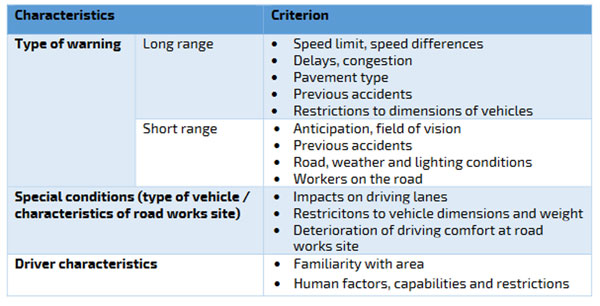Maintaining operability of the road network requires regular maintenance and improvement works, which can pose harm to traffic. A recent study produced background for an implementation and usage strategy for cooperative road works warnings in the Finnish road environment.
Cooperative road works warnings are being tested
Roadworks may cause delays in traffic, and both road users and road workers are vulnerable to accidents. To mitigate the harmful effects, efficient information of road users about upcoming roadworks is important. Traditionally, road users have been informed with measures including traffic signs and announcements via the radio. Advancements in technology allow for new cooperative intelligent transport systems (C-ITS) to provide information to road users as part of a smart transport system.
An example of this information is the short-range road works warning. Warnings sent by transmitters located on truck-mounted attenuators pose a practical way to inform road users about upcoming road works. Drivers receive these warnings through a separate receiver in their vehicles, using the ITS-G5 standard. Typically, a warning is received about 300 m before the road works site. The first trials in Europe have mainly concentrated on the systems’ technical functionality as well as defining action plans. Assessment of the potential impacts that the warnings could have is only available for a limited number of studies. The systems have few users at present, as receiving the warnings requires having a separate ITS-G5 receiver in the vehicle. In Finland, road works warning trials have been successfully implemented by using mobile devices as receivers. This approach is more flexible and allows for example also sending warnings also on a longer range.

Photo: ilushutter/Mostphotos.com
Important criteria: range of warning, vehicle type and driver and worksite characteristics
The study conducted literature review and expert interviews and studied accidents near road works sites as well as reported safety deviations at road works sites to collect information as a basis for an implementation strategy. The key classification criteria for road works warnings that were obtained through the different methods were found to complement each other. Interviewed experts emphasised the road environment and characteristics of the road works as important factors. Local conditions and consequences of road works emerged as criteria from hindrance ratings of the road traffic management centres. Literature complemented the criteria especially from the human factors point of view.
Based on the collected information, the most important criteria that should be considered when defining the importance and significance of road works warnings were defined. In addition to the characteristics of the road works site, the purpose and implementation of the warning should play a role. Slightly different criteria, depending on the conditions and intended use, are highlighted for short range and long range warnings. As cooperative systems become more common, coordination of messages from different sources is important from the driver point of view, in order to avoid receiving too many messages from many different systems.

Table 1. Criteria affecting the importance and significance of road works warnings.
The study was carried out by VTT as part of the Traffic Safety 2025 consortium.
The full report (in Finnish) can be found at
https://julkaisut.vayla.fi/pdf12/vj_2019-51_yhteistoiminnallisten_tietyovaroitusten_web.pdf
 Contact:
Contact:
Elina Aittoniemi
elina.aittoniemi@vtt.fi
VTT Technical Research Centre of Finland Ltd., Finland






Follow us: